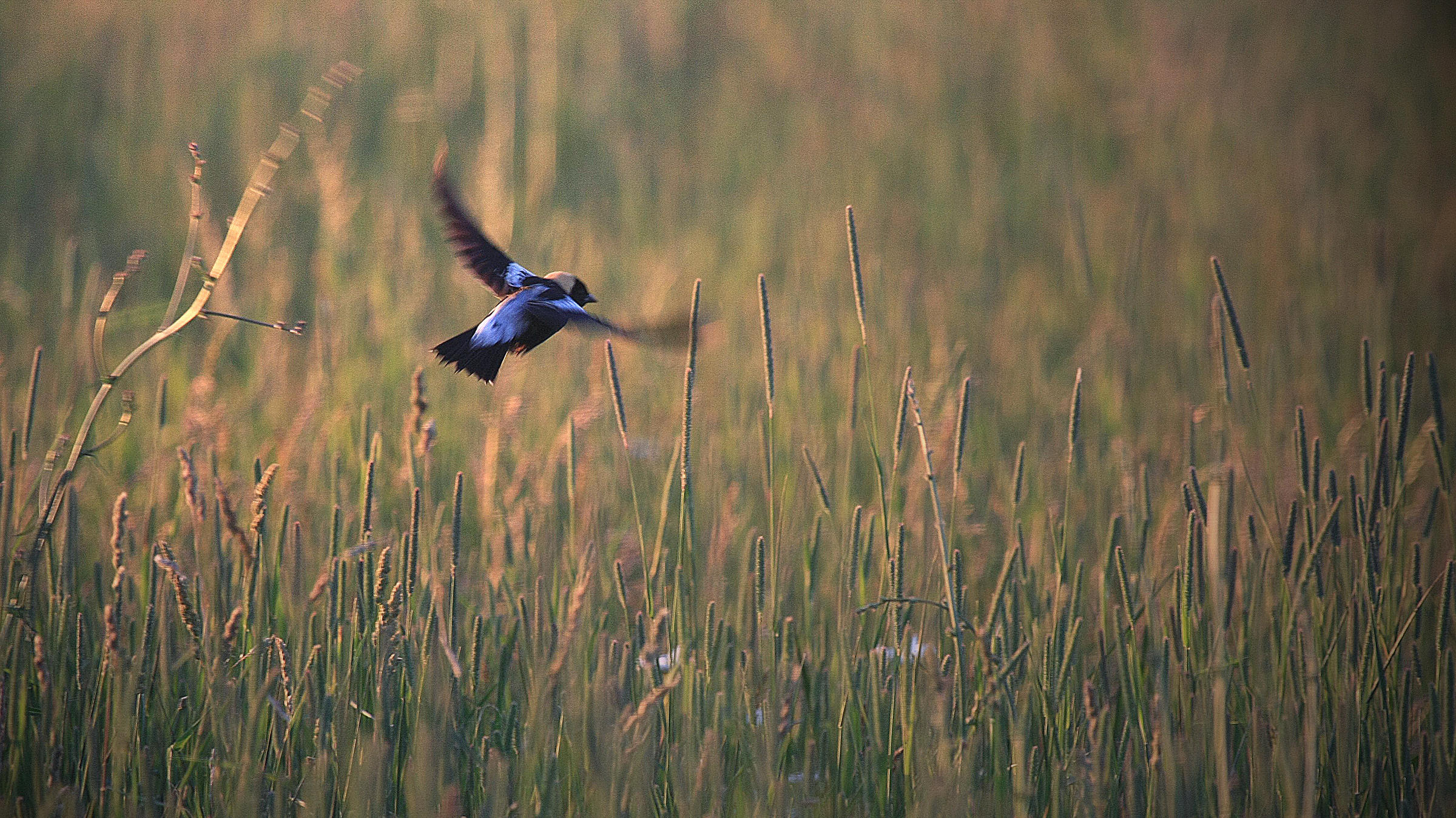Background
Grassland birds are declining very quickly with some species no longer breeding in New York. Two-thirds of our farmland has been lost over the past century, and the availability of grasslands has been further reduced by the shift to crop monocultures (such as corn, soybeans, and winter wheat) which do not provide the same bounty of grassland bird habitat that are found in the diverse, beneficial mixes of grasses and legumes found in hayfields and pastures.
Habitat Description
While the natural habitats most commonly considered to be grasslands are the tall and short-grass prairies of the Midwest, some of the common land cover types found in New York provide habitat to grassland birds. These include hayfields, pastures, fallow fields, and other agricultural lands, as well as recently abandoned agricultural lands, landfills, and airports.
Threats
Many grassland birds build their nests directly on the ground in hayfields, pastures, and old fields, making nests prone to predation by raccoons, skunks, snakes, foxes, coyotes, and more. The nests can also be flooded during heavy spring rains, and cutting hay and grazing can negatively impact nesting grassland birds. However, these issues are manageable and easily addressed compared to the permanent loss of agricultural hayfields and pastures that has been occurring since the early 1900s.
Management Recommendations
While every property will require its own set of unique approaches to making it suitable grassland bird habitat, below are some best practices to consider on your land.
- Maintain enough habitat and connect "open-space" – Grassland birds need relatively large fields (20 acres and larger, depending on the species and the landscape). A small grassland patch surrounded by open space, even if the surrounding fields are not grasslands, is better for grassland birds than a grassland surrounded by trees.
- Clean up fence lines – Although hedgerows provide important habitat for some wildlife, along with other benefits such as erosion control and wind and snow breaks, even small trees and shrubs pose problems for grassland birds. A line of brush or trees delineates the edge of a grassland habitat patch to birds that prefer large grasslands for breeding. Also, hedgerows and brush lines attract weasels, raccoons, skunks, foxes, crows, and more—all species that eat grassland bird eggs and nestlings. Reducing the woody corridors that intrude into or border grasslands helps young grassland birds to survive.
- Control shrubs and woody vegetation in the field – Abandoned fields make good grassland bird habitat, but only for a few years. Once shrubs and saplings are established the habitat quickly becomes unsuitable for grassland birds, and bringing it back into good condition becomes more difficult and more expensive. If a field is large enough to be used by grassland birds, a regular plan of mowing, haying, or grazing is important to keep it as grassland, but timing is crucial. Mowing each patch every 2 or 3 years, or a rotating fraction (1/3 or 1/2 of the patch) each year, is preferable to mowing annually.
- Time mowing and hay-cutting to allow young grassland birds to escape – nests, eggs, and flightless young of ground-nesting grassland birds are obviously vulnerable to the tractor wheels and mowing equipment. The following mowing/haying dates are ranked in order of value to breeding grassland birds from highest to lowest:
After 20 August only.
Once before 20 May, and once after 20 August. The following options will allow only limited successful breeding:
Once before 1 June.
After 20 July only. - Maintain a healthy mix of grass and other beneficial plants – Both native plants (such as goldenrod and some asters) and non-natives (knapweeds, mugwort, and honeysuckles) can easily spread in grasslands. Regular mowing (as soon as possible after the dates listed above) helps maintain healthy grasslands. For some invasive species, more aggressive techniques are needed, such as early spot-mowing (mowing only the affected "spot" in the field) to prevent flowering and spread of seeds, or other controls for heavy infestations.
- When grazing, keep stocking rates low enough to maintain nesting cover – High-intensity grazing (including rotational grazing) removes the vegetation needed as cover for grassland bird nests, exposing the nests to severe weather and predators and also subjects nests to a greater risk of trampling. Maintaining "refuge patches" that are not grazed is also a critical component of any sound rotational grazing prescription that advertises wildlife benefits. Grazing at low intensities is also extremely useful for maintaining open, grassy fields, although occasional mowing (after the breeding season) is sometimes needed.
Donate to Audubon
Help secure the future for birds at risk from climate change, habitat loss and other threats. Your support will power our science, education, advocacy and on-the-ground conservation efforts.





